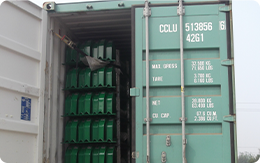 Afrikaans
Afrikaans  Albanian
Albanian  Amharic
Amharic  Arabic
Arabic  Armenian
Armenian  Azerbaijani
Azerbaijani  Basque
Basque  Belarusian
Belarusian  Bengali
Bengali  Bosnian
Bosnian  Bulgarian
Bulgarian  Catalan
Catalan  Cebuano
Cebuano  Corsican
Corsican  Croatian
Croatian  Czech
Czech  Danish
Danish  Dutch
Dutch  English
English  Esperanto
Esperanto  Estonian
Estonian  Finnish
Finnish  French
French  Frisian
Frisian  Galician
Galician  Georgian
Georgian  German
German  Greek
Greek  Gujarati
Gujarati  Haitian Creole
Haitian Creole  hausa
hausa  hawaiian
hawaiian  Hebrew
Hebrew  Hindi
Hindi  Miao
Miao  Hungarian
Hungarian  Icelandic
Icelandic  igbo
igbo  Indonesian
Indonesian  irish
irish  Italian
Italian  Japanese
Japanese  Javanese
Javanese  Kannada
Kannada  kazakh
kazakh  Khmer
Khmer  Rwandese
Rwandese  Korean
Korean  Kurdish
Kurdish  Kyrgyz
Kyrgyz  Lao
Lao  Latin
Latin  Latvian
Latvian  Lithuanian
Lithuanian  Luxembourgish
Luxembourgish  Macedonian
Macedonian  Malgashi
Malgashi  Malay
Malay  Malayalam
Malayalam  Maltese
Maltese  Maori
Maori  Marathi
Marathi  Mongolian
Mongolian  Myanmar
Myanmar  Nepali
Nepali  Norwegian
Norwegian  Norwegian
Norwegian  Occitan
Occitan  Pashto
Pashto  Persian
Persian  Polish
Polish  Portuguese
Portuguese  Punjabi
Punjabi  Romanian
Romanian  Russian
Russian  Samoan
Samoan  Scottish Gaelic
Scottish Gaelic  Serbian
Serbian  Sesotho
Sesotho  Shona
Shona  Sindhi
Sindhi  Sinhala
Sinhala  Slovak
Slovak  Slovenian
Slovenian  Somali
Somali  Spanish
Spanish  Sundanese
Sundanese  Swahili
Swahili  Swedish
Swedish  Tagalog
Tagalog  Tajik
Tajik  Tamil
Tamil  Tatar
Tatar  Telugu
Telugu  Thai
Thai  Turkish
Turkish  Turkmen
Turkmen  Ukrainian
Ukrainian  Urdu
Urdu  Uighur
Uighur  Uzbek
Uzbek  Vietnamese
Vietnamese  Welsh
Welsh  Bantu
Bantu  Yiddish
Yiddish  Yoruba
Yoruba  Zulu
Zulu types of pulley in belt conveyor
Types of Pulleys in Belt Conveyors
Belt conveyors are an integral component in various industries, serving to transport materials efficiently and reliably. Among the crucial parts of a belt conveyor system, pulleys play a significant role in the operation of the conveyor. They are essential for redirecting and transmitting the force generated by the belt, allowing for a smooth and effective movement of materials. Understanding the different types of pulleys used in belt conveyors is essential for optimal design, performance, and maintenance.
1. Drive Pulleys
Drive pulleys, sometimes referred to as head pulleys, are pivotal in a belt conveyor system. Positioned at the discharge end of the conveyor, they are responsible for driving the belt forward. These pulleys are typically powered by an electric motor, which generates the necessary torque to move the belt and load. Drive pulleys must be robust and have a high friction surface to ensure effective grip on the conveyor belt. They are often designed with lagging materials that enhance friction and protect the pulley surface from wear and tear.
2. Idler Pulleys
Idler pulleys, or return pulleys, are positioned along the conveyor's length to support and redirect the belt. Unlike drive pulleys, idler pulleys do not transmit power but instead play a supportive role in maintaining the alignment and tension of the belt. They help in reducing sag and ensuring a uniform load distribution across the conveyor. Commonly used types of idler pulleys include flat idlers, troughing idlers, and impact idlers, each designed for specific applications. Flat idlers maintain the belt's path, while troughing idlers are designed to hold bulk materials, and impact idlers are used at loading points to reduce belt wear from heavy loads.
3. Tail Pulleys
Tail pulleys, located at the loading end or the tail of the conveyor, serve to support the belt as it returns after discharging its load. They assist in maintaining belt tension and ensuring an efficient return path for the belt. Tail pulleys usually have a low-friction surface to facilitate the smooth movement of the belt. They may also incorporate a cleaner to prevent material buildup, which can lead to operational issues.
types of pulley in belt conveyor

Take-up pulleys are essential for maintaining the proper tension within the conveyor belt system. They are typically found at the tail end and serve to adjust the length of the belt. When the belt stretches or is affected by temperature changes or load variations, take-up pulleys can be used to tension the belt properly, ensuring efficient operation. These pulleys can be either manual or automatic, allowing for easy adjustments without requiring extensive shutdown procedures.
5. Snub Pulleys
Snub pulleys are utilized to change the direction of the belt and help increase the amount of contact between the belt and the drive pulley. They are typically located close to the drive pulley and are crucial for enhancing the power transmission capabilities of the conveyor. By increasing the contact angle of the belt on the drive pulley, snub pulleys improve the frictional grip between the two surfaces, resulting in better performance during heavy loads or incline applications.
6. Redirection Pulleys
Sometimes referred to as guide pulleys, redirection pulleys are used when a belt needs to change its direction significantly. These pulleys help guide the belt around corners or obstacles within the conveyor system, ensuring that the belt remains aligned and performs efficiently.
Conclusion
Understanding the various types of pulleys within belt conveyors is essential for effective system design and operation. Each type of pulley serves a specific function, contributing to the smooth and efficient movement of materials across various industries. By integrating the right combination of drive, idler, tail, take-up, snub, and redirection pulleys, manufacturers can optimize their conveyor systems for improved productivity and reduced operational costs. Proper selection, installation, and maintenance of these pulleys will ensure the longevity and reliability of belt conveyor systems, making them invaluable assets in material handling operations.
-
Revolutionizing Conveyor Reliability with Advanced Rubber Lagging PulleysNewsJul.22,2025
-
Powering Precision and Durability with Expert Manufacturers of Conveyor ComponentsNewsJul.22,2025
-
Optimizing Conveyor Systems with Advanced Conveyor AccessoriesNewsJul.22,2025
-
Maximize Conveyor Efficiency with Quality Conveyor Idler PulleysNewsJul.22,2025
-
Future-Proof Your Conveyor System with High-Performance Polyurethane RollerNewsJul.22,2025
-
Driving Efficiency Forward with Quality Idlers and RollersNewsJul.22,2025





























